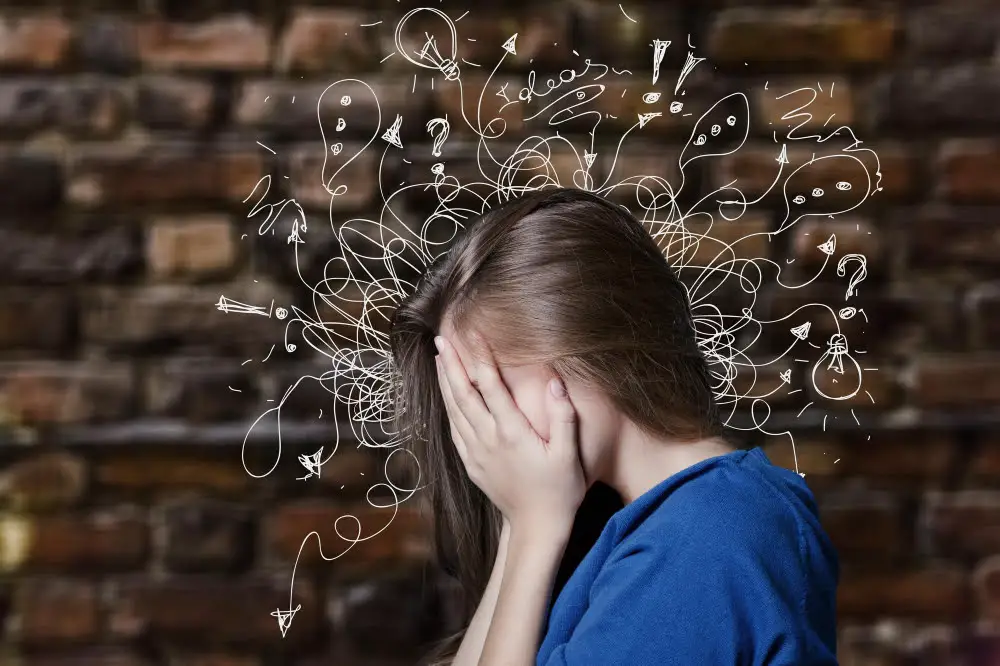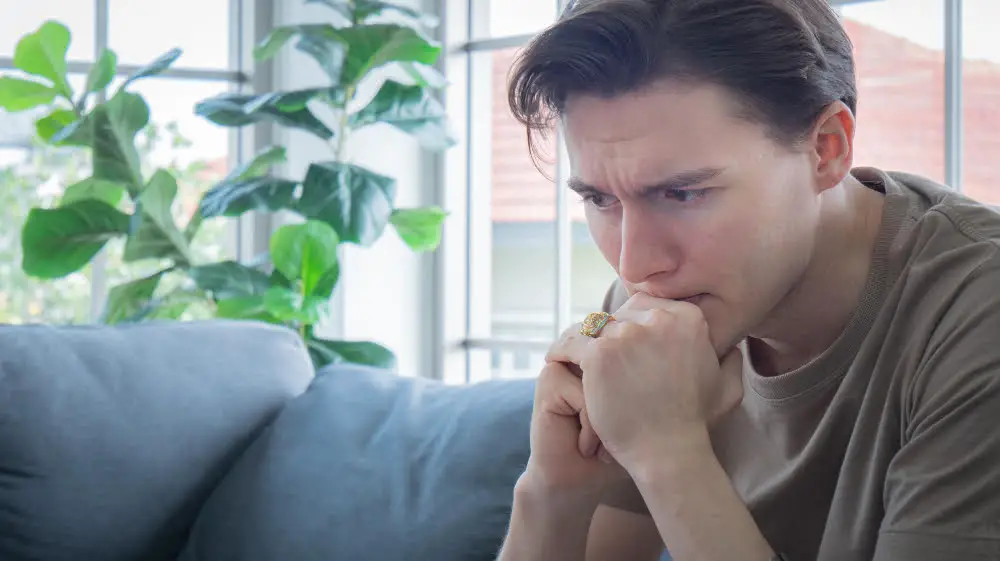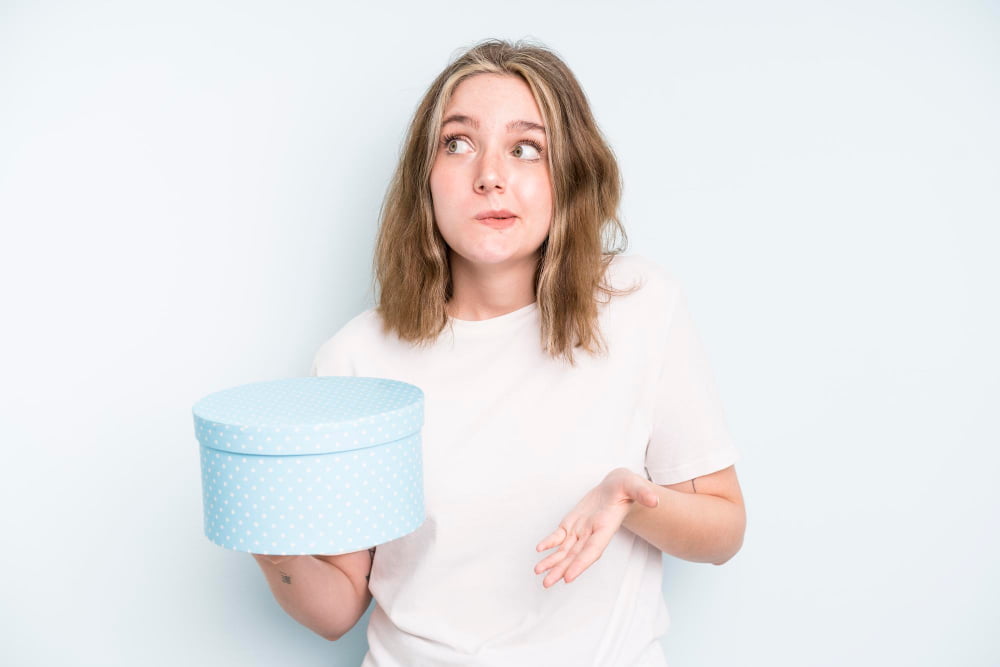Last updated on
Compulsive decluttering, often misunderstood, can transform from a productive habit into a detrimental obsession – this article explores its symptoms and impacts while offering effective management strategies.
Compulsive decluttering, sometimes referred to as obsessive-compulsive spartanism, is a behavioral pattern characterized by an excessive desire to discard possessions.
While decluttering typically promotes cleanliness and organization, compulsive decluttering can be detrimental, leading to stress, anxiety, and impaired daily functioning.
This article aims to delve into the causes, symptoms, and effective strategies to handle compulsive decluttering.
By exploring the psychological underpinnings of this behavior, you can gain a better understanding of how to manage it, ensuring a balanced and harmonious living environment.
This comprehensive guide offers insights into compulsive decluttering and provides practical tips to strike a healthy balance between decluttering and hoarding.
Table of Contents
Understanding Compulsive Decluttering

Compulsive decluttering deviates from the normal, healthy habit of maintaining an orderly environment. This condition, despite being on the opposite side of the spectrum from hoarding, can be equally destructive.
Hoarding triggers stress due to excessive clutter; meanwhile, compulsive decluttering causes anxiety due to the extreme need to eliminate items.
This excessive need to rid oneself of possessions stems from the fear of clutter and the overwhelming emotions associated with it. Responding to these emotions, the compulsive declutterer excessively purges belongings as a coping mechanism.
However, this impulsive act can escalate, causing an unhealthy relationship with possessions. To maintain a minimalist environment, items may be disposed of indiscriminately, often leading to regret or the need to replace them later.
It’s crucial to note that despite appearances, the meticulously clean and sparse homes of compulsive declutterers are not always a result of a well-organised mindset. Instead, they may be symptomatic of a deeper psychological struggle that requires understanding and intervention.
Psychological Insight Into Compulsive Decluttering

As a manifestation of Obsessive-Compulsive Disorder (OCD), compulsive decluttering thrives on the cycle of anxiety and relief.
The clutter-free environment functions as a placebo for immediate relief from the perceived chaos, feeding into the urgency to discard items constantly.
Neurological studies link this behavior to the brain’s overactive regions associated with decision-making and anxiety control.
Cognitive Behavioral Therapy (CBT) proves an effective psychological intervention, targeting the restructuring of thought patterns, offering an alternative to the compulsive need to declutter.
The key lies in understanding the role of anxiety and the perceived need for control in this behavior which enables the development of strategies for managing it effectively.
The Science of Compulsive Decluttering

Research reveals that compulsive decluttering shares similarities with obsessive-compulsive personality disorder (OCPD), where individuals’ preoccupations with orderliness and perfection often lead to distress when interacting with “clutter.” It stems from a psychological discomfort experienced with too much stuff around, coercing the individual into purging belongings beyond what’s necessary for a tidy space.
This is often caused by a deep-seated yearning to control their surroundings to cope with anxiety or stress, similar to the control dynamics seen in eating disorders. Neuroscience explains that the reward center in our brains, the nucleus accumbens, activates during the process of decluttering, releasing dopamine, a neurotransmitter associated with pleasure. This reinforces the behavior, making it harder to break the cycle of compulsive decluttering.
Furthermore, environmental factors can exacerbate this condition, particularly in societies idolizing minimalism and immaculate spaces.
Difference Between Organized Living and Compulsive Decluttering

Organized living embodies the principle of ‘a place for everything and everything in its place,’ promoting efficiency and enhancing well-being. It involves making deliberate decisions about what to keep and where to store it, creating a smooth-flowing, functional space.
Contrastingly, compulsive decluttering frequently exceeds these beneficial boundaries. It is driven by an overwhelming urge to dispose of items, often leading to bare, impersonal living spaces. The individual may feel intense discomfort at the sight of any item they deem unnecessary, leading to recurrent, distressful purging behaviors that can interfere with daily functioning and relationships.
The primary difference, therefore, lies in the emotional motivation and outcomes: organized living generates calm and control, while compulsive decluttering tends to unleash anxiety and stress.
Identifying Compulsive Decluttering: Signs and Symptoms

Establishing whether decluttering habits have turned into a compulsive behavior can often be challenging. Notable symptoms often include an excessive need to toss out items, even those deemed valuable or sentimental.
Physical discomfort or anxiety at the sight of clutter or possessions can also be a signal of compulsive decluttering. This typically goes beyond an ordinary need for cleanliness or open space. It can reach a point where individuals avoid accumulating items to ward off anxiety, even those necessary for daily living.
Moreover, people facing this issue may also decline gifts or purchases, fearing they might clutter their meticulously maintained spaces.
It’s essential to distinguish between a healthy desire for orderliness and the compulsive need for minimal possessions, especially when it begins to interfere with an individual’s everyday life and relationships.
Assessing the Severity of Compulsive Decluttering

Distinguishing between a simple preference for minimalism and a compulsion can be challenging. A critical aspect of evaluating the severity lies in the impact on daily life. If the habit results in anxiety, stress, or impairment in functioning across different aspects of life, it indicates a more severe issue.
Do you experience an uncontrollable urge to discard items frequently, and does this activity consume a significant amount of your time? Does the mere thought of acquiring new possessions or the sight of clutter make you excessively anxious or uncomfortable? If you’re unable to bring even necessary items into your space out of fear that it might become cluttered, it points towards a severe manifestation of this behavior.
It’s also vital to examine the emotional effect of this habit. An emotional numbness or indifference towards discarding personal or sentimental items might signal a problem. On the other hand, if getting rid of things gives you a rush or satisfaction, it might indicate compulsiveness. However, if the desire to declutter leads to distress, or conflicts with others, it suggests this behavior is adversely affecting your emotional well-being and relationships.
Remember, routine cleaning or the occasional desire to declutter doesn’t warrant concern. The severity of compulsive decluttering lies not merely in the act itself, but in the feeling of distress stemming from the compulsion to continually cleanse space. This behavior, if left unchecked, can potentially hamper one’s quality of life.
Decoding the Emotional Causes of Compulsive Decluttering

Compulsive decluttering often stems from a deep-seated need to control one’s environment. This tendency usually roots in feelings of anxiety and fear of over attachment. By discarding physical items, the individual attempts to reduce emotional strain.
For some, each object in their living space might represent a potential hazard or responsibility, thus the fewer items they possess, the safer and freer they feel.
On another note, compulsive declutterers sometimes hold onto a belief that a minimalist living space reflects a well-adjusted, successful person. They may associate clutter with personal failure, thus decluttering becomes not just a physical act but a psychological purge too.
Traumatic life events can also trigger compulsive decluttering, as expected in victims of hoarding. For these individuals, decluttering provides an outlet for emotional healing, albeit an unhealthy coping mechanism.
Finally, it’s worth noting that the emotional causes of compulsive decluttering aren’t the same for everyone. Behavior and driving forces can differ greatly, thus understanding and addressing them requires a personalized approach.
Exploring the Mindset of a Compulsive Declutterer

The mindset of a compulsive declutterer often centers around a relentless pursuit of minimalism. A markedly high level of anxiety is witnessed when faced with clutter, leading to an unwavering need to purge items. These individuals seek comfort in sparse surroundings, corresponding to a psychological preference for order and emptiness.
Further, an exaggerated interpretation of the commonly accepted “less is more” philosophy often characterizes their predisposition. They may also possess an extreme aversion to accumulation, as possessions may be perceived as burdensome or anxiety-inducing.
This mindset can in turn affect their relationships and emotional well-being. It’s crucial, therefore, to acknowledge and address compulsive decluttering like other obsessive-compulsive disorders, paving the way for more balanced living spaces and healthier mindsets.
Purging Habits of Compulsive Declutters

Individuals struggling with this form of obsessive-compulsive disorder often display distinctive behaviors when discarding items. These include a relentless drive to purge possessions, governed by a deep-seated fear of clutter instead of a need for a clean environment per se. Daily decisions to throw away items may stem from an irrational fear of becoming a hoarder.
Unlike the straightforward process of decluttering, compulsive purging is more frequent and relentless, sometimes leading to depletion of essential items. It’s not uncommon to find these individuals with starkly bare living spaces, devoid of what might appear as typical conveniences or even necessities.
Compulsive declutterers can struggle with attachment to items, even those with sentimental value, often disposing of objects immediately after use or receipt. Gifts, keepsakes, and essential documents are not exempt from this behavior, adding to the complexity and potential distress caused by the condition.
This unceasing pattern of purging is a clear sign and can escalate to more critical levels if not addressed promptly. Next, we shall explore the emotional complexities behind such extreme decluttering.
Receiving Gifts: The Compulsive Declutterer’s Dilemma

Gifts, for most, provoke joy or gratitude. However, for those wrestling with compulsive decluttering, the same experience can create anxiety.
The apprehension of adding unnecessary items into their streamlined space often results in immediate disposal or ineffective storage of these items. As benign as this may seem, it could potentially strain relationships and cause misunderstandings.
One approach to mitigate this issue is open communication. Informing friends and family of specific gift preferences can prevent unwanted items.
Better yet, ask for experiences or subscriptions instead of physical presents – a perfect way to maintain minimalism without turning down gesture of affection.
The Emotional Aspect of Compulsive Decluttering

Compulsive decluttering often arises from profound emotional concerns. An individual with this condition tends to associate reduced belongings with feelings of control, calm, and reduced anxiety, which are attached to discarding items.
Decluttering becomes their coping mechanism for dealing with stress and emotional discomfort. However, the relief is ephemeral, causing the person to engage in repeated cycles of decluttering. This compulsive behavior, ironically, can induce additional stress and anxiety, thus establishing a vicious cycle.
Untangling this emotional web is the first step in managing and overcoming compulsive decluttering.
Feeling Stressed At Home: A Sign of Compulsive Decluttering

Space is essential for relaxation, creativity, and fulfillment.
However, when the mere sight of items in a room triggers stress or when sparse surroundings are the only source of comfort, it could signal an issue.
If there’s a continuous urge to purge possessions due to an undying dissatisfaction with the state of the home, it may indicate an excessive decluttering tendency.
This constant dissatisfaction can escalate stress levels, disrupt peace of mind, and tip the normal decluttering process into the territory of a compulsive disorder.
The key is to identify this stress and how it is disproportionately associated with the state of one’s environment.
Through this understanding, professional help can be sought, and conscious efforts can be made to restore a sense of balance and peaceful coexistence with possessions.
The Impact of Compulsive Decluttering On Relationships

Compulsive decluttering can drastically strain relationships, creating discord and misunderstanding between individuals sharing living spaces.
The insistent removal or tidying up of shared household items can lead to conflicts, with others feeling imposed upon or even controlled.
Misinterpretations of these actions can lead to resentment, escalating to trust issues as personal belongings may be discarded without consent.
Less noticeable, but equally damaging, are the anxieties instigated by the fear of causing upset within the home, fostering an uneasy atmosphere of tension.
Communication is key in such scenarios, as understanding and accommodating compulsive decluttering behaviors can mitigate its relational impacts.
Dealing With a Family Member’s Compulsive Decluttering

When confronting a family member displaying compulsive decluttering behaviors, it’s crucial to approach the issue with understanding and compassion. Start by having an open and non-judgmental conversation about their decluttering habits and how it affects the family dynamic. It’s important not to criticize or blame but rather to express concerns genuinely.
Pursue professional help if the behavior affects their daily functioning or causes significant distress. Psychologists, therapists, or professional organizers can provide valuable insight into managing this situation more effectively. Encourage them without forcing; remember, they might not perceive their habits as problematic.
In the meantime, consider creating designated spaces for each family member’s belongings, ensuring less conflict over things getting discarded without consent. Patience, empathy, and constructive communication go a long way in handling such sensitive situations.
Detrimental Effects of Compulsive Decluttering

Excessive decluttering can lead to significant negative effects on a person’s life. Frequently, it triggers stress and anxiety, as individuals constantly worry about discarding items that they may need in the future.
They may experience functional impairments, finding routine tasks challenging due to the lack of necessary items. Moreover, there’s a serious risk of damaging personal relationships, as the behavior may cause conflicts with family members or roommates who have differing opinions about the necessity of objects.
The constant purging of items can also result in financial strain due to the continuous need to repurchase discards. Lastly, the mental health toll this compulsion takes can extend well beyond the immediate behaviors, leading to feelings of isolation and depression.
Thus, effective resolution strategies are crucial to prevent these negative outcomes.
Tips to Balance Your Decluttering Habit

It’s essential to find a middle ground between purging too much and keeping everything. Start by practicing mindfulness about your urges to discard items. Consider each object’s utility, emotional attachment, and replacement cost before deciding.
Instead of immediate disposal, consider a “maybe box” where items can sit for a while, making the decision less impulsive. Redefining ‘clutter’ and ‘necessary’ can also help. Remember, it’s about creating a comfortable living space, not an empty one.
Set decluttering schedules that work for you – daily, weekly, or monthly, and stick to them. This assists in retaining the discipline without letting it overflow into a compulsion.
Engage in activities like meditation and exercise to alleviate stress and anxiety, often underlying causes of extreme decluttering.
Lastly, consider professional help if compulsive decluttering continues to impact everyday life negatively. Therapists and professional organizers can provide strategies to manage compulsive behaviors and establish a more balanced approach to decluttering.
Coping Mechanisms for Compulsive Declutterers

Acknowledging the tendency towards compulsive decluttering can be challenging, but it’s the first step to establishing healthier habits. Start by retaining necessary and cherished items. Letting go of something shouldn’t cause extreme anxiety or stress.
If it does, keep the item and revisit the decision later.
Another helpful strategy is to set parameters for decluttering activities. Designate specific spaces or categories for decluttering (like books or kitchenware) and do not exceed the agreed limits. This can moderate the need to excessively part with possessions.
Take time to reflect upon the emotions associated with discarding objects. If feelings of distress and unease surface, consider seeking professional help. Cognitive Behavioral Therapy (CBT) has been successful in treating such behaviors by reorienting thoughts and attitudes towards possessions.
Professional Therapies for Compulsive Decluttering

Cognitive Behavior Therapy (CBT) is often the first line of treatment for compulsive decluttering. It focuses on challenging and changing negative thought patterns and behaviors. In the case of compulsive decluttering, CBT helps to understand the nature of obsessive thoughts and develop healthier responses.
Exposure and Response Prevention (ERP), a subset of CBT, exposes the patient to the fear associated with hoarding objects and teaches methods to deal with the anxiety instead of resorting to decluttering.
Acceptance and Commitment Therapy (ACT) offers another approach. It encourages patients to embrace their thoughts and feelings rather than fight against them, thus breaking the cycle of obsession and compulsive decluttering.
Family Therapy could be beneficial if compulsive decluttering negatively impacts relationships at home. It helps family members understand the condition and equips them with coping mechanisms.
Medication, particularly Selective Serotonin Reuptake Inhibitors (SSRIs), may supplement therapy. They can help manage anxiety and depressive symptoms if these are present alongside compulsive decluttering.
Remember, professional guidance in choosing the right therapeutic approach is crucial. Therefore, consulting a health care provider or psychiatrist is advised before starting any form of treatment.
Resources and Support for Compulsive Declutterers

Appropriate resources and support can make dealing with compulsive decluttering easier. Therapeutic options, like cognitive-behavioral therapy (CBT), have shown effectiveness in redefining thought patterns relating to decluttering. Self-help books such as “Buried in Treasures” by David Tolin provide readers with a practical step-by-step approach to manage their tendencies.
Online platforms like the International OCD Foundation offer valuable information, screening tools, and a chance to connect with others coping with the same challenges. Additionally, local support groups present opportunities for shared experiences and mutual encouragement.
Lasty, professional organizers specializing in compulsive decluttering can provide personalized guidance to reform unhealthy decluttering habits. They can work with you to create an environment that’s organized but not obsessively so, striking the perfect equilibrium. Also, they can offer ongoing support and insight, imparting skills that enhance your overall wellbeing.
Success Stories: Overcoming Compulsive Decluttering

Overcoming compulsive decluttering can seem daunting, yet numerous individuals have successfully managed this behavior, reclaiming control over their lives. Garnering inspiration from these stories provides hope and potential strategies for those grappling with this compulsion.
Consider Jennifer, who initially enjoyed the calm of a minimalist surrounding. Over time, her purge cycles became more frequent and intense, creating tension within her household. Determined to change, she sought professional assistance and dismantled her decluttering rituals, replacing them with healthier habits.
Similarly, John, who used to dispose of items he thought were “excess,” found solace through cognitive-behavioral therapy. His success story is a testament that change is attainable and that even the most persistent decluttering habits can be tamed.
Lastly, Lisa, by combining therapy and self-help techniques, learned to differentiate between organizing and compulsive decluttering. Her journey highlights the efficacy of consistent effort towards establishing a balanced lifestyle.
Success stories like these foster hope and evidence that compulsive decluttering, while challenging, can be managed successfully. Emulating their strategies can guide affected individuals towards a healthier, less stressful life.
FAQ
How do you treat compulsive decluttering?
Compulsive decluttering can be managed utilizing techniques used in OCD treatment, preferably under the guidance of a professional therapist.
What are the symptoms of compulsive decluttering?
Compulsive decluttering symptoms include persistent visions of cluttered spaces, feelings of relief when disposing items, and a tendency to declutter when feeling down or anxious.
Why am I obsessed with getting rid of stuff?
The obsession with getting rid of stuff is often a result of stress and anxiety, as decluttering can provide temporary relief from these feelings.
What is clutter disorder?
Clutter disorder, also known as hoarding disorder, is a condition characterized by the excessive acquisition and disorganized storage of items, often of little to no monetary value, leading to unmanageable amounts of clutter.
What are the psychological roots of compulsive decluttering?
Compulsive decluttering can stem from psychological roots such as Obsessive-Compulsive Disorder (OCD), anxiety, and a need for control or perfection.
How can professional help aid in managing compulsive decluttering?
Professional help, such as therapists or professional organizers, can provide personalized strategies and emotional support to manage and overcome compulsive decluttering.
What coping mechanisms can be adopted to control the urge of compulsive decluttering?
Compulsive decluttering urges can be controlled through coping mechanisms such as cognitive-behavioral therapy, mindfulness techniques, replacing the habit with a more positive action, and seeking professional help.




